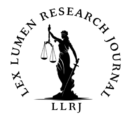Written By Paridhi Malik),
(VIPS,
January 2025
INTRODUCTION:
Fashion is not merely the paparazzi flashes and trends, it is a multi billion dollar sector that has various other sects like art, culture, creativity, and commerce. Not only in India but across the globe fashion industry plays an important role in the economy, providing employment to millions and facilitating the global promotion of indigenous arts.In India the fashion industry has gone through several transformations achieving global recognition. The famous traditional textiles like Banarasi Silk, Pashmina Shawls, and Kanchipuram sarees have spread their footprints worldwide. But this is the legal framework for interstate and going beyond the border , dynamic enough to deal with legal challenges like Artificial Intelligence , influencers and fast fashion trends.
Fashion law remains an underdeveloped area despite the increasing importance, the lack of awareness and ignorance not only in India but across the globe. Fashion law is not only limited to covering counterfeit disputes, it is much more dynamic and exhaustive, which the article aims to examine.
INFLUENCER MARKETING:
We all have seen our social media feeds being bombarded brand reviews, skincare trends, fashion trends, marketing for real money gambling sites like Stake, that stimulates different practices among the among the youth that has both positive and negative sides, but the thing that shall be duly noted is the secrecy which is there for paid collaborations. It is obvious that as time evolve so do the strategies employed by brands in their advertising efforts, influencer marketing acts as a bridge between the brands and Generation Z, as they have been immersed in a digital environment dominated by social media platforms.This generation seeks authenticity and genuine connections and they perceive influencers as authentic individuals rather than mere corporate hand directing them towards their brand as a part of their job. By sharing their personal narratives, passions, expertise in fashion influencers gain a sense of reliability and credibility that shapes GenZs interests and ambitions which impact their consumer purchasing decisions that carry their weight forward to the marketplace.
If we come to the legal aspect of this area, the fundamental principle of ethics influencer marketing is transparency, it shall be duly noted that any brand collaboration and paid partnerships shall be revealed as it allows the audience to differentiate between genuine endorsements and paid promotions. It’s not only a recommended practice but a legal obligation to the intricate relationship between creative expression and legal accountability.Influencers themselves navigate their actions thoughtfully, ensuring that their promotional efforts are transparent to uphold their credibility and steer clear legal issues. Fashion Brands need to strategically oversee their reputation in the digital era, as they may face legal challenges stemming from adverse remarks, or public relations dilemmas related to influencer,as well as the contracts need to be carefully drafted.
One of the key legal issues is being carefully sync with the guidelines set forth by the Federal Trade Commission, influencers need to disclose their affiliations with brands, clearly indicating when their content is sponsored or includes affiliate links.As well as brands even need to pay attention to concerns related to intellectual property. The authorized use of trademarks, copyright content, designs in influencer posts can result in legal conflicts. Although there have been several advancements in this field by Copyrights Act of 2020 and guidelines from Ministry of Consumer Affairs, there remain several gaps that require attention which was seen in the case of Marico Ltd V Abhijeet Bhansali, that moved around the plaintiff well known trademark of “Parachute”.
TECHNOLOGY AND AI
The development of technology has transformed and developed various sectors, leading to new and fast strategies for effective growth. In the fashion industry technology has emerged as a crucial driving force behind its evolution, now we are stepping towards integrating AI with all aspects of human existence. Generative Ai technologies like ChatGPT, have sparked keen interest of the stakeholders of investing in AI driven fashion design. Various outfits are4 being created with the help of AI are now being seen in fashion runways, utilising image recognition and retention of technologies. However, this advancement also has a dark side as it has given rise to several legal and ethical dilemmas, highlighting the complexities and challenges with AI in fashion design, mostly regarding ownership disputes. For example, in the start of the year 2024, we saw the case filed against Shein, a Chinese fast-fashion brand. The lawsuit pointed out the brand employing AI- driven algorithm to search for artistic and creative content online , which allegedly led to production , distribution, and sale of identical replicas of artists’ works, the c ase underscores the brands reliance on AI identifying emerging fashion trends and create precise reproductions of the popular styles it uncovers.
With suit we even administered AI resulting in taking human creativity to a back seat which sparked controversies about lack of human creativity furthermore, raising concerns about copyright application. Creativity is a human centric concept, which can be seen when the U.S. Copyright Office indicated that work generated entirely by AI does not qualify for copyright protection due to the absence of human creativity. On 23 March 2023, regarding the same issue, the U.S. Authorship Office, provided clarification that there can be expectations where a work incorporating AI- generated content includes enough human creativity to warrant a copyright claim. For instance, if a human selects or organises AI- Generated content in a sufficiently creative manner, the resulting work may be considered an original work of the authorship. Even after efforts made by the Copyright Office, making the legal frameworks align with the technological advancements is challenging, as well as legal disputes can take years to settle, and regulators and lawmakers frequently lag in implementing changes or guidance with the development of technology. Various Cases, have emerged like;
Thaler V Comptroller General of Patents(UK): Explored the question of whether artificial intelligence can be designated as an inventor in patent claims. It was asserted that only humans can be recognized as inventors.Although AI can streamline the design process, it is vital to safeguard the artistic spirit of fashion. But if AI is not recognized as an inventor the rights to such designs would revert to the human organisation responsible for the AI, potentially overlooking the role of AI in the creative process.
DATA PRIVACY:
AI technology in the fashion industry frequently depends on extensive datasets to forecast trends, tailor designs and enhance supply chain efficiency.This information includes consumer habits, individuals preferences, body dimensions, and even real time geographic data. One Of the main issues is management of the collected information regarding, storage, utilization,and dissemination. Additionally, the data is exposed to breaches which can give birth to several situations like identity theft or the improper use of personal information. Many cases have even came up like in February 2023 Illinois Supreme Court ruled in favour of the plaintiff, who claimed that White Castle improperly gathered her biometric information and shared it to a third-party vendor, violating the Biometric Information Privacy Act(BIPA).Companies need to brace for potential legal challenges and activism as public awareness regarding user rights and data privacy, brands like Too Faced, Bobbi Brown, Smashbox and Estee Lauder have successfully avoided a class action lawsuit initiated by certain customers under the Illinois Biometric Privacy Law. The complaints alleged that the brands did not adequately disclose that their biometric data would be collected when they engaged in the virtual try ons or submitted their photos, the US court dismissed the case as the Plaintiffs failed to establish a link between the facial scans obtained through the virtual try on software and the actual identities of the consumers.
CONCLUSION:
Establishing ethical guidelines for AI and new means of Marketing in the industry is important, these guidelines need to tackle concerns like data privacy, bias and transparency. This includes defining explicit standards and conducting regular assessments to adjust to emerging challenges. Fashion Law is an evolving field that merges commerce and legal aspects, not only the Indian Fashion Industry but other developing nations is rapidly expanding, driven by influencer, and cutting edge technologies such as AI and the demand for demand for a comprehensive legal structure. With the recent developments we experience several gaps by ignorance and lack of a legal framework, as fashion law exposes various stakeholders in the industry to risks, affecting the opportunities for growth and innovation. Establishing a common legal framework worldwide for fashion law tackling these challenges can empower designers, creators, and influencers, while promoting fair competition and supporting technological processes, which can only be possible with the contribution of the policymakers, industry participants and legal professionals. This integrated approach will facilitate a more secure, inclusive and innovative future for the fashion industry.
REFERENCES:
[1] LEGAL BATTLES IN AI FASHION DESIGN: WHO CLAIMS OWNERSHIP? – Jus Corpus
[2] The Uncharted Legal Frontier Of AI In Fashion – The Interline
[3] Understanding The Connection Between Gen Z And Influencer Marketing – SocialStar


